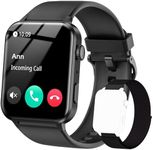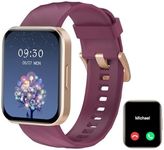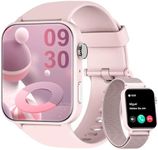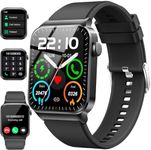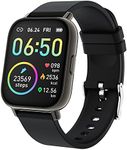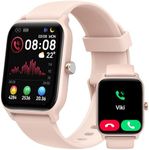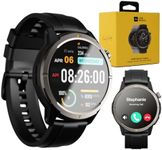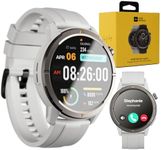Buying Guide for the Best Smartwatch That Makes Calls
When choosing a smartwatch that makes calls, it's important to consider how it will fit into your lifestyle and meet your specific needs. Smartwatches have evolved to offer a range of features beyond just telling time, and the ability to make calls directly from your wrist can be incredibly convenient. However, not all smartwatches are created equal, and understanding the key specifications can help you make an informed decision. Consider how you plan to use the smartwatch, whether for fitness tracking, staying connected on the go, or simply as a fashion accessory, and let that guide your choices.ConnectivityConnectivity refers to how the smartwatch connects to your phone or network to make calls. This is important because it determines whether you can make calls independently of your phone. There are generally two types: Bluetooth and cellular. Bluetooth connectivity means the watch must be within range of your phone to make calls, while cellular connectivity allows the watch to make calls independently using its own SIM card or eSIM. If you want the freedom to leave your phone behind, a cellular-enabled smartwatch is the way to go. However, if you always have your phone nearby, Bluetooth connectivity might suffice.
Battery LifeBattery life indicates how long the smartwatch can operate before needing a recharge. This is crucial for a device that you rely on throughout the day. Battery life can range from a single day to several days, depending on usage and features. If you plan to use the watch heavily for calls, apps, and fitness tracking, look for a model with a longer battery life. For those who use their smartwatch more sparingly, a shorter battery life might be acceptable. Consider your daily routine and how often you are willing to charge your device.
CompatibilityCompatibility refers to how well the smartwatch works with your smartphone's operating system. This is important because it affects the functionality and features you can access. Most smartwatches are designed to work with either Android or iOS devices, and some are compatible with both. Ensure that the smartwatch you choose is compatible with your phone to make the most of its features. If you switch between different phone brands, a watch with cross-platform compatibility might be beneficial.
DisplayThe display is the screen of the smartwatch, and it affects how you interact with the device. This is important for readability and ease of use. Displays can vary in size, resolution, and type (such as LCD or AMOLED). A larger, high-resolution display is easier to read and can show more information at once, which is useful for making calls and reading messages. However, larger displays may consume more battery. Consider how you will use the watch and whether you prioritize screen clarity or battery efficiency.
DurabilityDurability refers to how well the smartwatch can withstand everyday wear and tear, including exposure to water and dust. This is important if you lead an active lifestyle or plan to wear the watch in various environments. Look for features like water resistance and scratch-resistant glass. If you are often outdoors or engage in sports, a more rugged, durable watch might be necessary. For everyday use in less demanding conditions, a standard level of durability may be sufficient.
Health and Fitness FeaturesHealth and fitness features include sensors and apps that track your physical activity and health metrics. This is important if you want to monitor your fitness levels or health conditions. Features can range from basic step counting to advanced heart rate monitoring, GPS tracking, and sleep analysis. If you are a fitness enthusiast or have specific health goals, look for a smartwatch with comprehensive health tracking capabilities. If fitness tracking is not a priority, you might opt for a simpler model with fewer health features.
